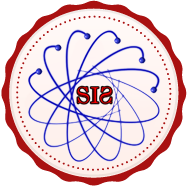COMPARATIVE STUDY REGARDING DEVELOPMENT OF INFORMATION SOCIETY IN ROMANIAN ENTERPRISES. A MULTIMETHOD ANALYSIS
Abstract
The impact of information society – as a factor of organizational change (Dovenport, 2003) on performance of firms is increasingly approached and measured – by means of statistical indicators – in the specialty literature, developing in a fast pace and influencing all business sectors, from industrial, services, either touristic, medical, educational or public administration. Within the EU – 28 countries positive evolutions were registered in 2014 compared with 2010 related to adoption of e-business technologies in enterprises. In Romania, the development of indicators concerning information society compared to that of EU-28, have registered growth rates much higher than those of EU-28, EU-27 or Euro area, especially following the post-accession to the European Union. The average values of IT&C indicators for Romania - according to Eurostat – are much more different compared to EU-28 and, in this study we have applied statistical testing methods as regards these differencies by means of the Student t test. The results have shown that for two of the seven indicators of information society there are significant differencies, for share of enterprises' turnover on e-commerce and enterprises having received orders online (at least 1%), respectively.
Keywords
References
Cîmpian, L, Lazar, E., Gabor, M. R. (2014) - Econometric modeling of influence on turnover concerning indicators of information society across the European Union, Procedia Economics and Finance, vol. 15, pp. 1578-1586
Cocalia, M.A. 2015 - Knowledge and information – new factors of production in the context of globalization, Ecoforum Journal, vol. 4, issue 1 (6), pp. 119 - 124
Davenport, T., 1993. Process Innovation: Reengineering Work Through Information Technology, Harvard Business School Press, Boston, MA
Eurostat Statistics (2015) - Information society statistics – enterprises, June 2015 available at http://ec.europa.eu/eurostat/statistics-explained/index.php/Information_society_statistics_-_enterprises
Firoiu, D., Croitoru, A.G. 2015 -The information and communication technology – impact on the hospitality industry in Romania, Ecoforum Journal, vol. 4, issue 1 (6), pp. 32 -37
Gabor, M. R., Ștefănescu, D., Conțiu, L. C. (2011) - Statistical methods – components of differentiation strategies of durable goods market in Romania, Revista Economica, vol. 57, no. 4, pp. 84 – 90
Gabor, M. R. (2009) - Statistics tests used in data analysis, Review of Management & Economic Engineering, vol. 8., no. 3, pp. 185 – 194
Grandon, E.E. & Pearson, J.M., 2004, “Electronic Commerce Adoption: An Empirical Study of Small and Medium US Businesses”, Information & Management, (42:), pp. 197-216
Hitt, L.M. & Brynjolfsson, E., 1996, “Productivity, Business Profitability and Consumer Surplus: Three Different Measures of Information technology Value”, MIS Quarterly, June, pp. 121-142
Eurostat Statistics available at http://ec.europa.eu/geninfo/legal_notices_en.htm
Palvia, P., 1996, A Model and Instrument for Measuring Small Business User Satisfaction with Information Technology, Information & Management, 31, pp. 151-163
Pollard, D., 2006, Promoting Learning Transfer. Developing SME Marketing Knowledge in the Dnipropetrovsk Oblast, Ukraine
http://ec.europa.eu/eurostat/product?code=isoc_ci_eu_en2&language=en&mode=view
http://ec.europa.eu/eurostat/product?code=isoc_bde15dec&language=en&mode=view
http://ec.europa.eu/eurostat/product?code=isoc_ec_evaln2&language=en&mode=view
http://ec.europa.eu/eurostat/product?code=isoc_cicce_obs&language=en&mode=view
http://ec.europa.eu/eurostat/product?code=isoc_cicce_use&language=en&mode=view

This work is licensed under a Creative Commons Attribution 3.0 License.



















